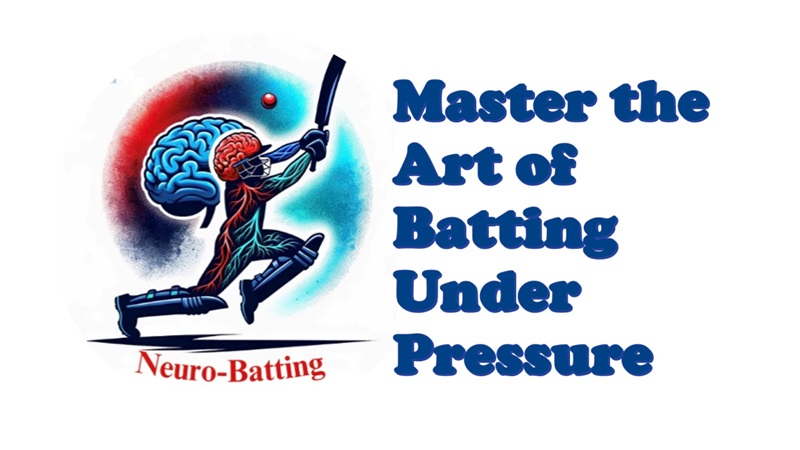Neuro Batting- Enhancing Batting Performance Under Pressure: The Neuroscience Behind Effective Cricket Training
Andre Burger | July 07, 2024

The Brain on the Cricket Field: Training vs. Game Conditions
Understanding how the brain operates under different conditions can revolutionise how we train athletes, especially batters in cricket. By tailoring training methods to activate and optimise specific brain areas, we can significantly enhance a player's ability to remain calm, focused, and effective when it matters most.
In a relaxed training environment, several brain regions are primarily engaged
- Occipital Lobe: Responsible for visual processing, allowing players to see and track the ball without stress.
- Parietal Lobe: Manages spatial awareness and motor coordination, helping players position themselves correctly and time their shots.
- Motor Cortex: Controls voluntary movements, ensuring precise and coordinated batting actions.
- Cerebellum: Involved in coordination and balance, aiding in smooth and stable movements.
- Basal Ganglia: Supports motor control and learning, helping develop consistent batting techniques through repetition and practice.
These areas are crucial for skill acquisition and refinement, but the game environment presents a different challenge.
In high-pressure situations, additional brain regions come into play
- Amygdala: Processes emotions like fear and stress. When activated by high-pressure situations, it can trigger anxiety and impair performance if not managed properly.
- Prefrontal Cortex: Responsible for decision-making, attention, and cognitive control. Under pressure, it works harder to maintain focus and make strategic decisions quickly.
- Anterior Cingulate Cortex (ACC): Involved in error detection and emotional regulation, crucial for maintaining composure under pressure.
- Hippocampus: Supports memory and spatial navigation, aiding in recalling strategies and adapting to changing game situations.
- Retina and Visual Pathways: The eyes work harder to track fast-moving objects and detect subtle cues, which are essential for making quick, accurate responses in a game.
The Importance of Pressure Training
To excel under pressure, it's not enough to only refine skills in a low-stress environment. Players must train in ways that activate the same brain regions required in high-pressure situations. This approach ensures that the brain's response to stress becomes a well-practised component of their game-day performance.
The Neuro Batting Program integrates advanced techniques to optimise brain function, enhancing performance under pressure. By focusing on cognitive and mental challenges, emotional regulation, and visual processing the program helps players develop the mental resilience and cognitive agility needed for high-stress situations. Batters can improve their focus, decision-making, and overall game performance under pressure through our holistic approach
By understanding and leveraging the neuroscience behind pressure performance, batting training can be transformed. The key lies in replicating the cognitive, emotional, and physical demands of game situations within the training environment, this is not easy. But we have found different ways to add these elements to our training sessions. This approach not only prepares players to handle stress but also ensures that their brain is conditioned to perform optimally when it counts the most.
Incorporating these insights into your training regimen will not only enhance your players' abilities but also give them the mental resilience needed to thrive under pressure. Stay tuned for more insights on optimising cricket training through neuroscience.








